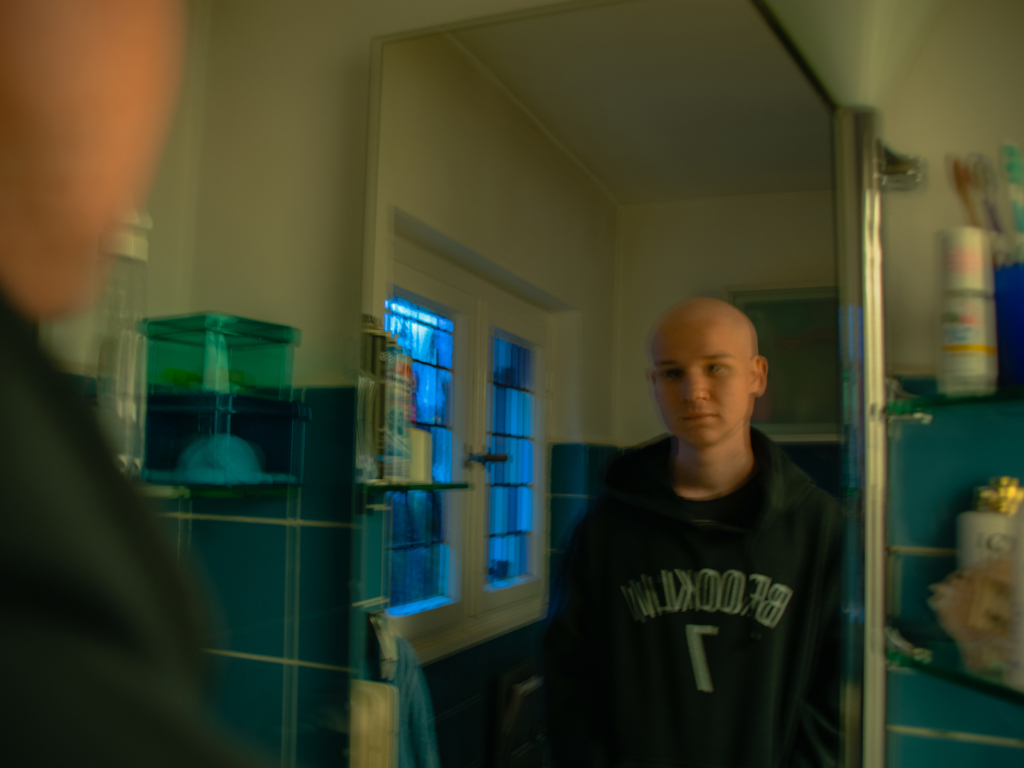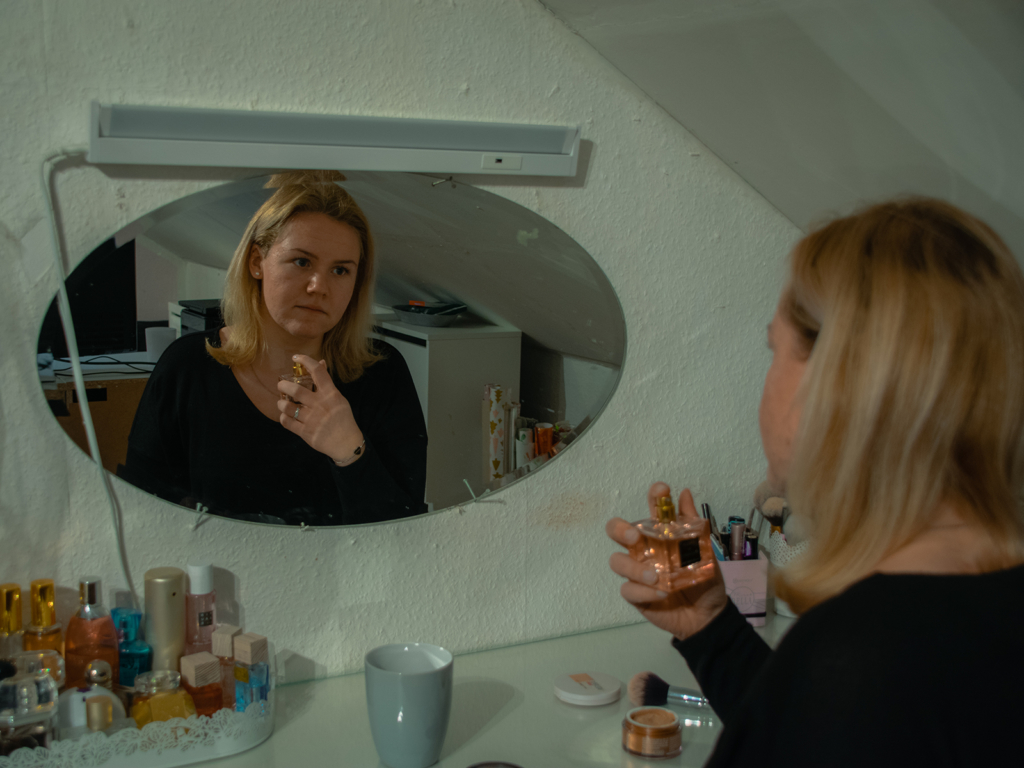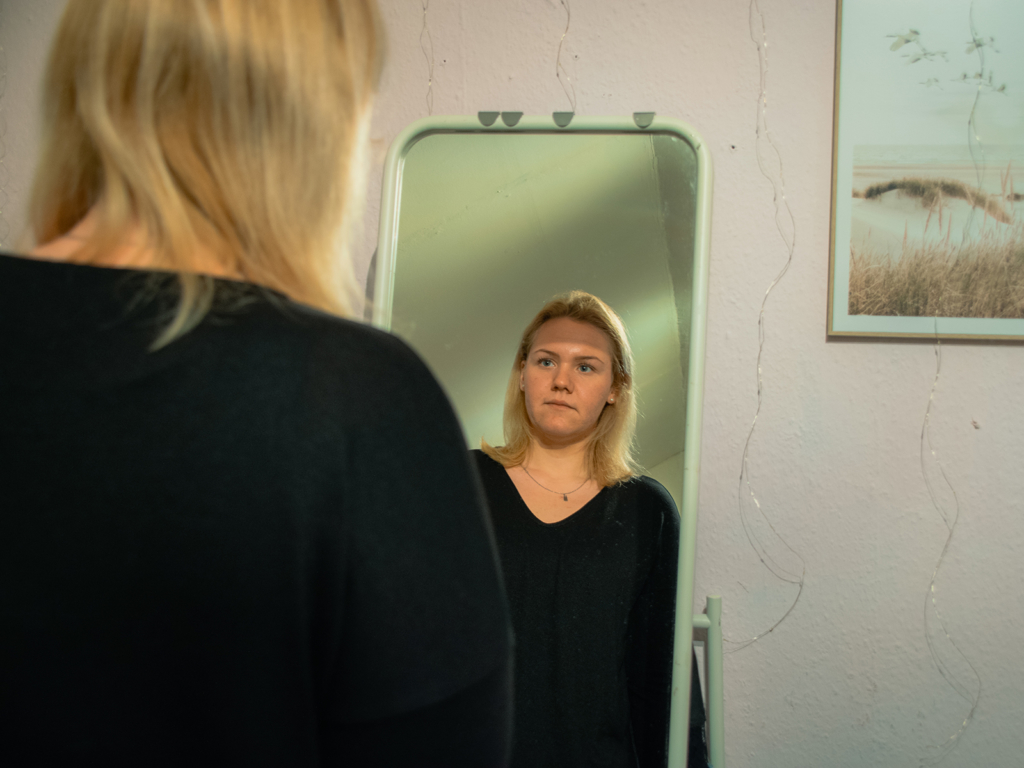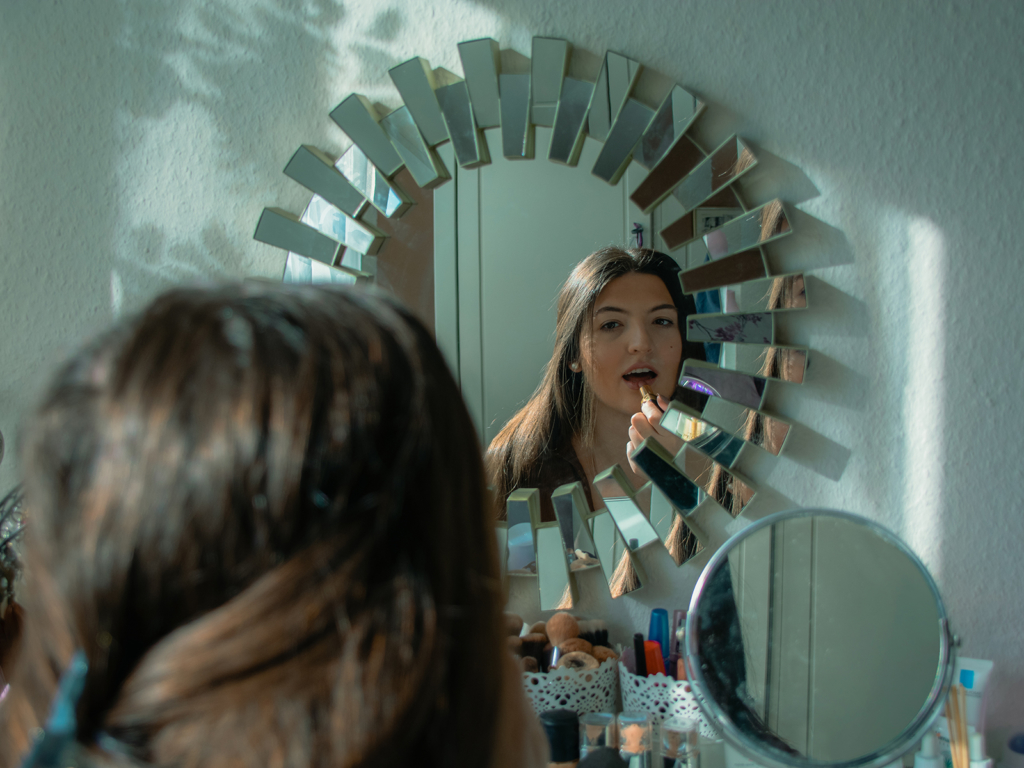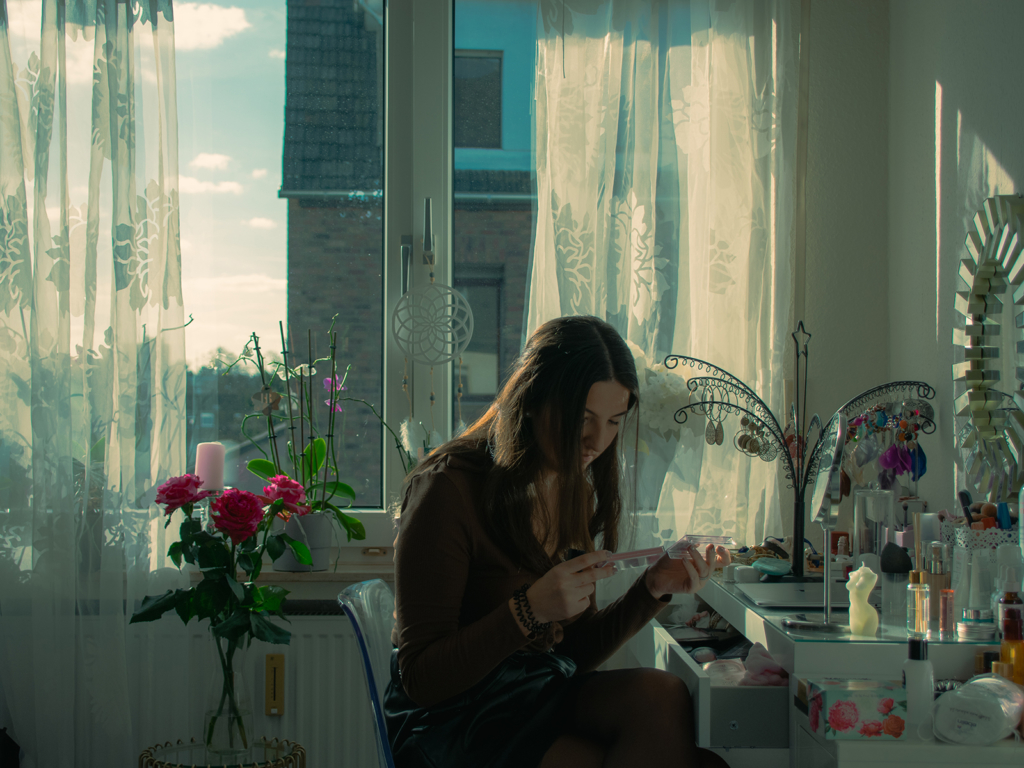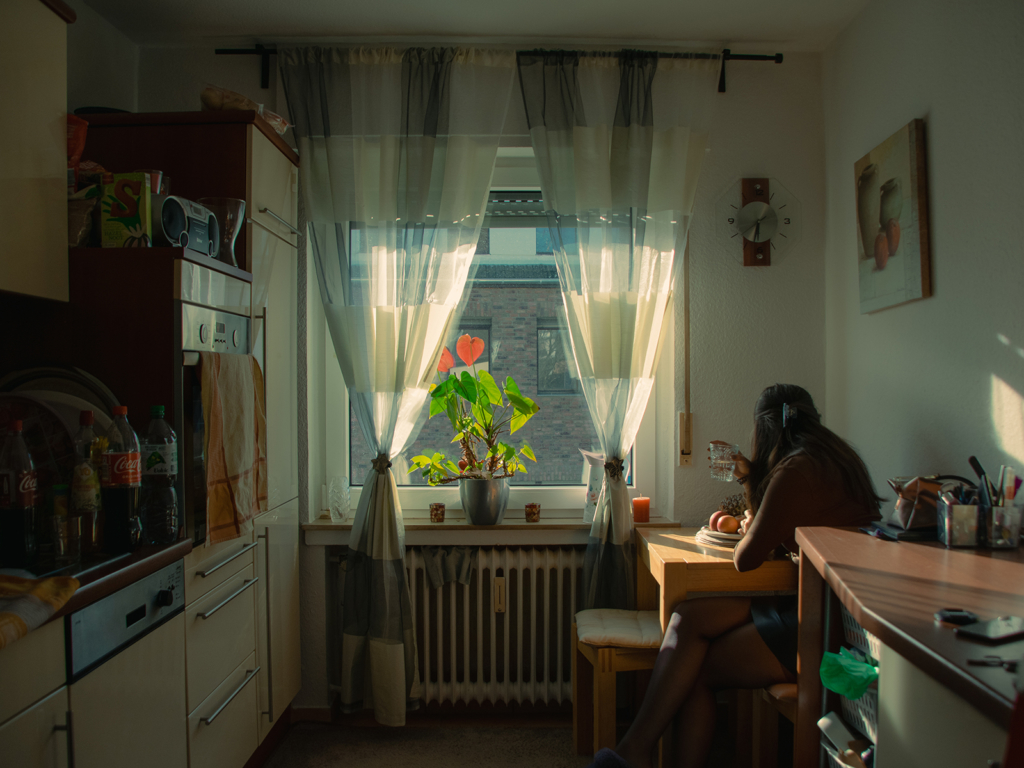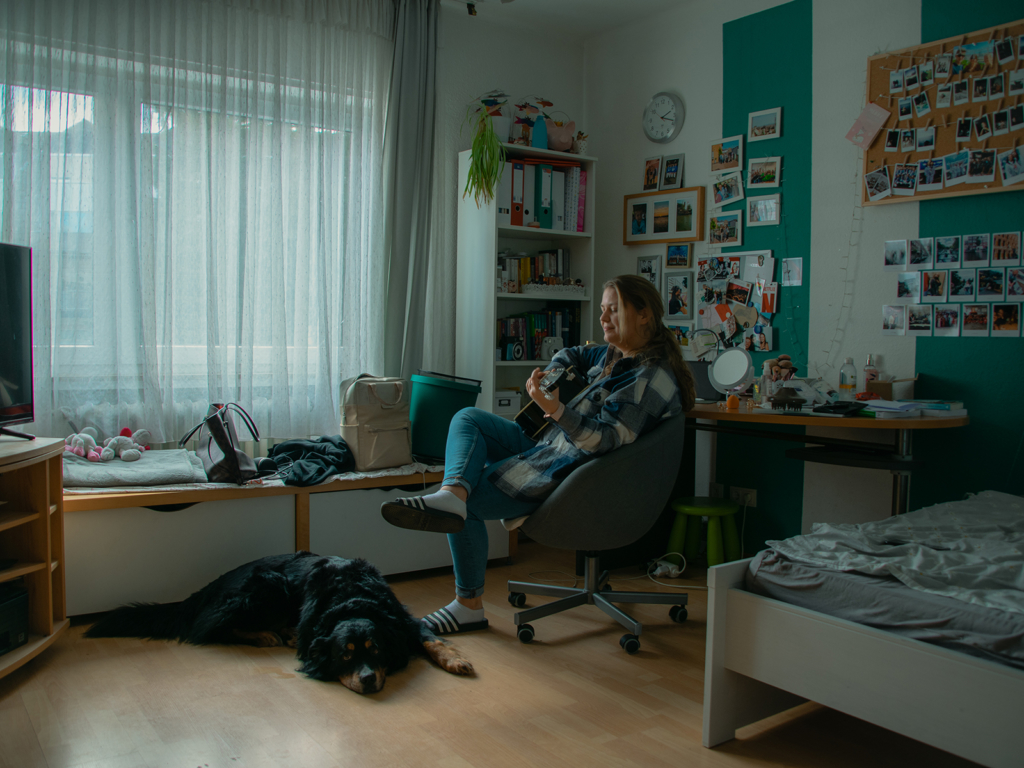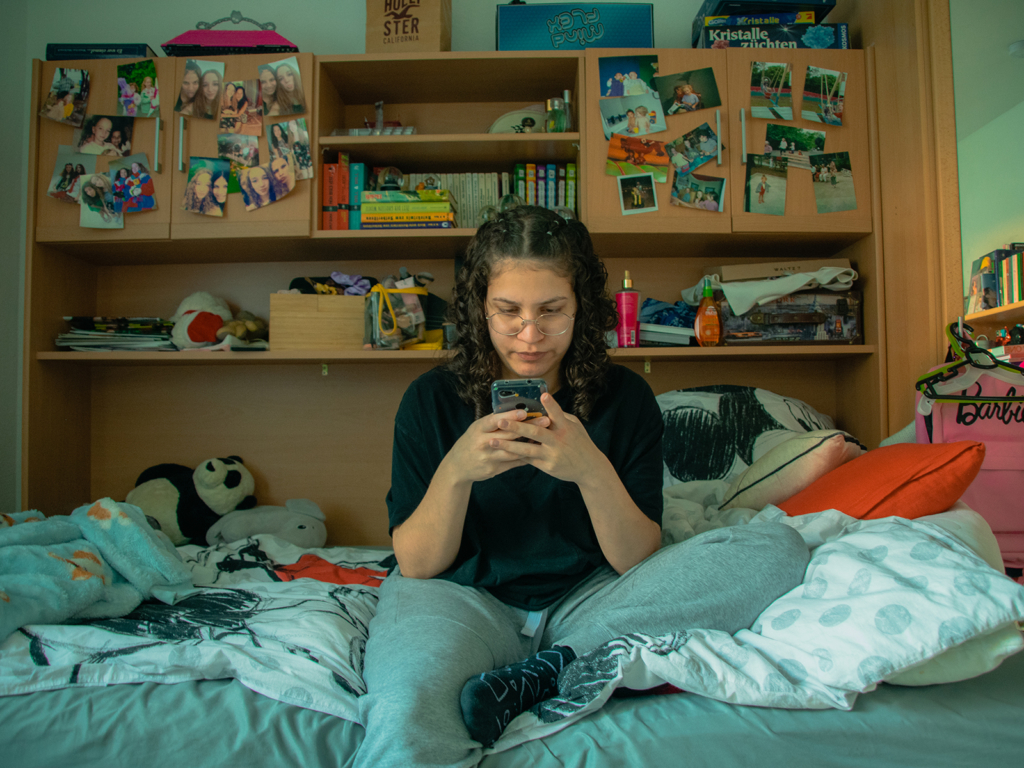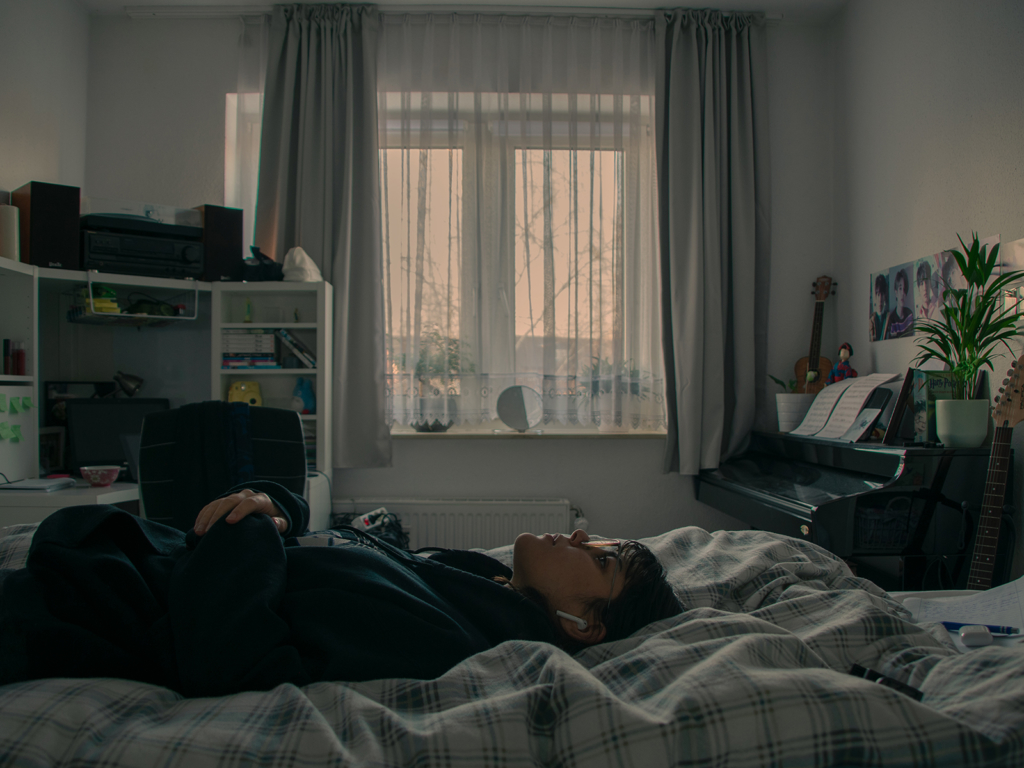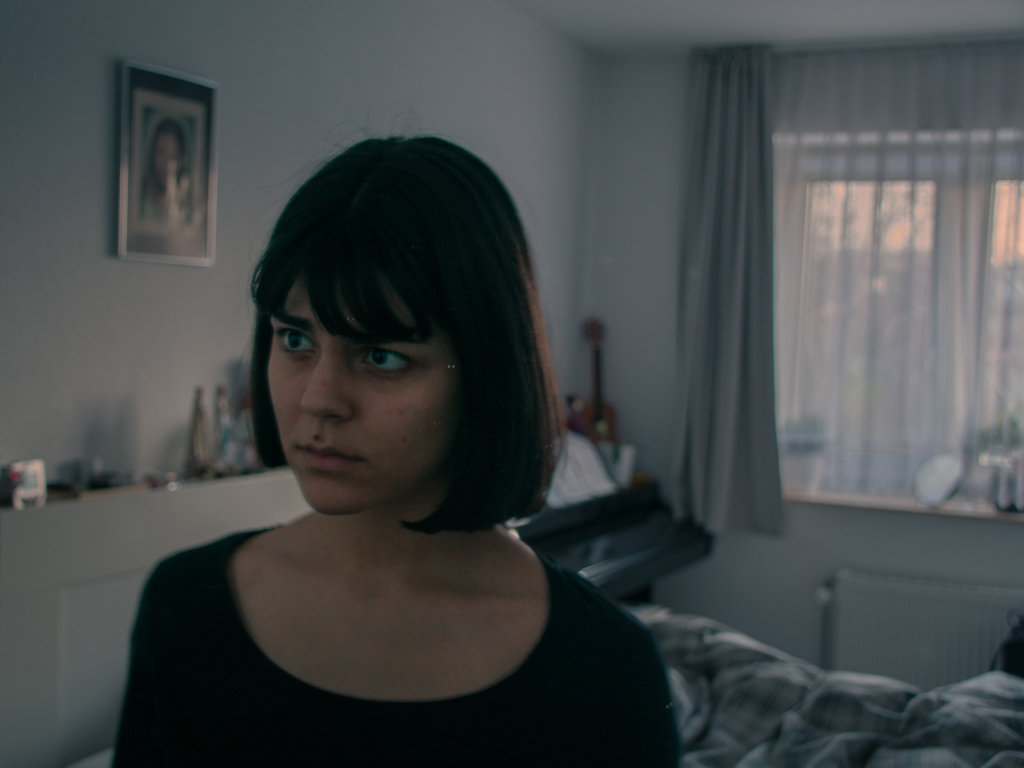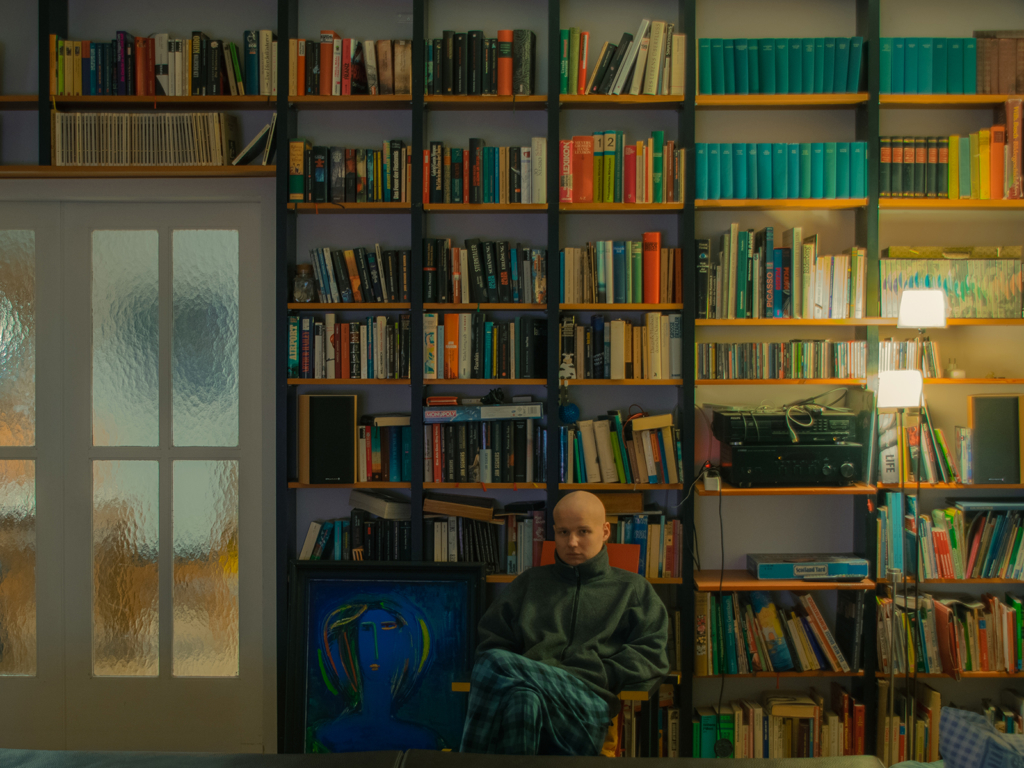In her Intermediate work, Jessica Martins Zisa examines private spaces and interprets them as reflections of the psychological inner world and emotional state of their inhabitants. In photographic interiors, situations are created that trace the mental state of the inhabitants. Immersed in themselves, the figures depicted thematise their relationship to the world and to themselves.
For Jessica Martins Zisa, private space is the field of investigation for her design-theoretical and photographic explorations.One’s own four walls are commonly understood as protection from the outside world. The living space is supposed to be the place where the inhabitants are allowed to live out their needs and feelings freely and unfiltered. Against this background, Jessica Martins Zisa asks about the aspects that make a house a »happy home«. What makes people feel safe and comfortable in their private space? And to what extent does one’s own home influence the psyche? However, the living environment can also trigger the opposite of well-being if it does not offer intimacy and security (anymore). Then the home becomes an »uncanny space« that is portrayed in images as crisis-ridden and refers to unsolvable conflicts and repressed affects.
Interiors show the relationships that the inhabitants maintain with the world, but also with themselves (Lars Spengler, 2011). In contemporary art, the interior – after the portrait – is the preferred representation to reflect the interior of a person. The work of Jessica Martins Zisa explores the close relationship between the body and private spaces through photography. Alongside psychological investigations of the home, selected photographs by artists such as Nan Goldin and Gregory Crewdson showing people in private spaces are reflected upon. In her interim project, Jessica Martins Zisa combines photo-historical considerations with design-scientific questions and her own practical elaboration of a photo series of people in private spaces.
Images: Jessica Martins Zisa

